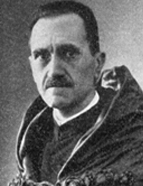

He devoted some of his attention to the history of Brazil after having participated in the National History Congress in 1949 as an official representative, and he could not resist entering into a debate with a Brazilian writer who denied the provenance of his positions. In that year, in a joint Luso-Brazilian edition, he published O descobrimento do Brasil por Pedro Álvares Cabral. Antecedentes e intencionalidade (The discovery of Brazil by Pedro Álvares Cabral. Antecedents and intentionality). In this book he strove to defend Portugal’s priority in the discovery of Brazil. This led to a controversial debate with the São Paulo professor, Tomás Óscar Marcondes de Souza, who had questioned this priority since 1944 and had published several volumes on the subject, such as O descobrimento da América e a suposta prioridade dos portugueses: de acordo com a história e a cartografia americana vetustíssima (The discovery of America and the supposed priority of the Portuguese: in accordance with history and very ancient American cartography). He had carried out a survey of all the Portuguese evidence that could contribute to clarify the issue of the discovery of Brazil. Similarly, he addressed Amerigo Vespucci’s pretensions to be hailed as the discoverer in a communication to the 1949 National History Congress of Rio de Janeiro, to which Damião Peres replied with Américo Vespúcio e a expedição de 1501-1502: resposta a Marcondes de Sousa (Amerigo Vespucci and the expedition of 1501-1502: reply to Marcondes de Sousa, 1949). This would be his second controversial debate, and maybe the most acerbic, since the São Paulo author did not spare him in his remarks. Damião Peres, although he also presented good arguments and used courteous language, revealed some incongruities and a certain ignorance, especially in the field of palaeography in which the São Paulo professor was no expert either (pp. 18-23).
However, Damião Peres’ unruffled exposé on the original and prior discovery of Brazil by Pedro Álvares Cabral does not invalidate the intentionality of the fleet’s being driven westwards. This is well grounded in the studies of natural conditions made by naval officers, especially Admiral Gago Coutinho. He concludes that the seamen methodically observed “waters and skies unknown until then, selflessly carrying out, in unknown seas, the plans that other people, in the stillness of their studies, were drawing up.” (O descobrimento do Brasil, p. 146).
